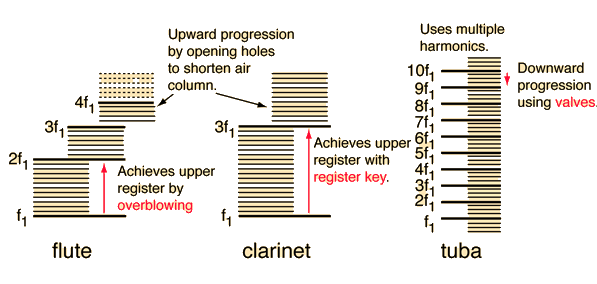The Brass Mouthpiece and the Players Lips
The brass player's lips are the source of excitation for the air column of a brass instrument. As described by Scott Whitener in his "A Complete Guide to Brass", "The sound of a brass instrument is created by the vibration of the lips initiating and maintaining a longitudinal standing wave in air enclosed within the instrument's tubing. ... The player's embouchure may be seen as a flow-control valve acting on the steady airflow coming from the lungs. The closed lips are blown apart, setting them into vibration. Puffs of air are thereby emitted into the mouthpiece, setting in motion a sound wave that eventually reaches the instrument's expanding bell."
As Whitener points out, the sound waves reflect from the open end at the bell and travel back and forth between the mouthpiece and players lips and the bell, producing a longitudinal vibration of the air column at the frequency of the player's lips. This efficient standing wave can be produced only at or near the resonant frequencies of the instrument, giving the characteristic sequence of harmonics of the instrument.
|
Index
Musical instruments
Musical acoustics foundations
Reference
Whitener |
